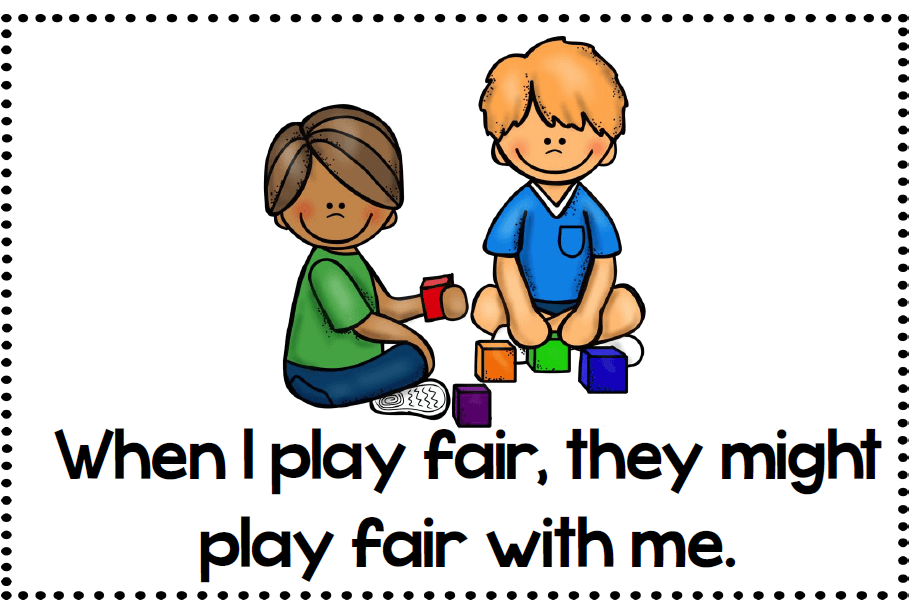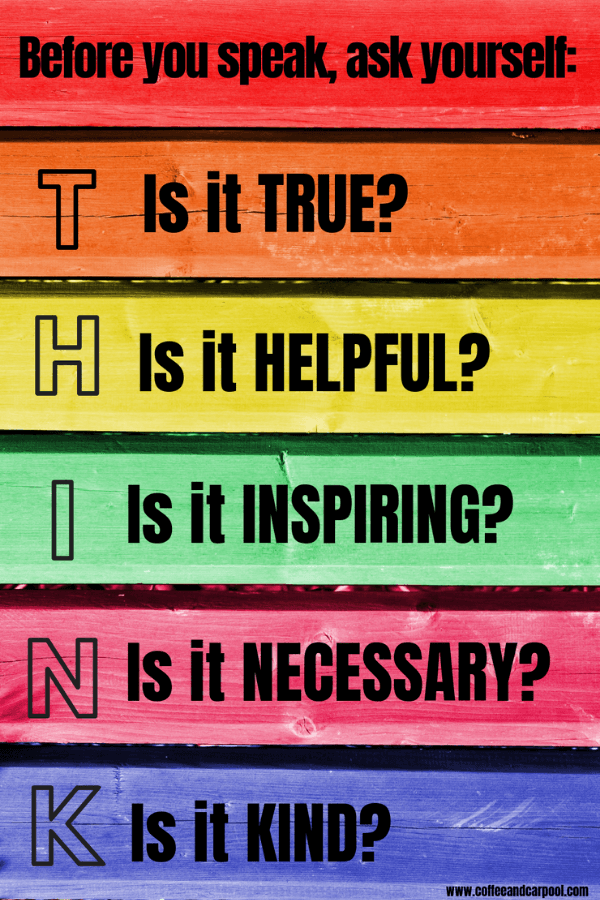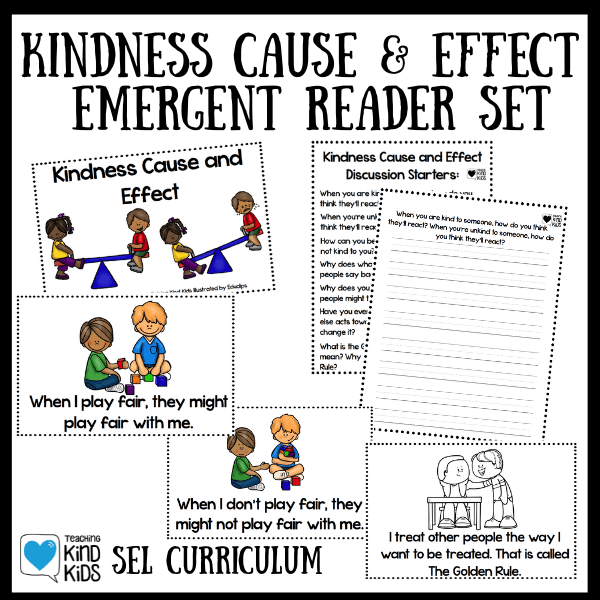Inside: Use this kindness cause and effect resource to help kids understand how their behavior affects those around them.
When I taught Kindergarten, one of the hardest concepts we were tasked to teach our young students was cause and effect. And it’s a hard concept because cause and effect can be so abstract.
So we start with what makes sense to them:
If you let go of the balloon (cause), it flies away (effect).
If you blow on the candle (cause), the fire goes out (effect).
If you throw the ball at the window (cause), the window will break (effect).
We would draw pictures mapping it out.
We would role-play and come up with different outcomes for each cause.
But the main point was this: you can sometimes control the cause with your actions. You can hold onto the balloon and not blow on the candle and not throw the ball, and that would change the outcome or the effect.
We can control our actions. (In fact, that’s ALL we can control) And that can change the outcome, the result, or the effect.
And when we apply that to how we treat other people, we start to teach kids that they are in control of the effect (other people’s responses, reactions) only when, and if they control the cause (their actions and words).
The cause and effect relationship can still be abstract and confusing until we make the concept more concrete and real to them using this Kindness Cause and Effect Flow Chart.

Kindness Cause and Effect
We are intentionally raising kind kids and focusing on compassion, empathy, respect, and being a good friend.
And to do that, one major component is discussing how they treat other people around them.
Are they speaking with kindness and acting with kindness?
When they’re mad, are they setting clear, calm boundaries and being mad without being mean?
Are they kind even if others aren’t kind back?
Are they treating people with the Golden Rule?
Are they thoughtful and considerate?
Are they using the THINK Method?
And we have to have this conversation over and over again: YOU CAN ONLY CONTROL YOUR ACTIONS.
Because we often hear: “I was kind to him but he wasn’t kind to me.” Or “He was mean to me, why should I be kind to him?” Or “She didn’t get me a drink yesterday, why should I get her one today?”
But here’s the deal that it takes many people years and years to learn:
- We can’t control how others treat us.
- We can’t control how others react to our actions.
- We can’t control how others speak to us.
We can only control our own actions and words. We can control how we respond and react to others.
That’s it.
But here’s the good news: when we speak and act with kindness, people are more likely to respond with kindness. It’s not a guarantee, and that’s okay. But the chances increase exponentially.
On the flip side, when we speak and act with meanness, cruelty, indifference, or hate, people are more likely to respond with meanness, cruelty, indifference, or hate. Again, it’s not a guarantee, but the chances are pretty high.
So if we want more kindness, we have to speak and act with kindness to increase our odds of kindness coming back to us.
And if kids are confused about why kids are treating them with unkindness, we can look at their behaviors and see if there’s a connection.
You can use this printable resource to help kids understand how their behavior affects the situation.

How to Use the Kindness Cause and Effect Resource:
1. Download and print it out. (download it below)
2. This resource is best used when kids are not having heightened emotions or are dysregulated. If they come to you with a situation and they’re upset, help them calm down first before using this to help explain that while they didn’t like what happened, what they did right before may have caused it.
3. Show kids the green section first.
If you are kind, turn take, listen to stop and no, are generous, etc. Then… people will want to be with you more often, they enjoy spending time with you, they ask you to play again, they are more likely to be kind to you.
Use examples from their life that fits and makes sense to them:
- You are kind to your friend so they often invite you over for playdates.
- You shared your snack with your sister, she shared a lick of her ice cream with you later.
- You were tickling your brother and he said stop and you stopped so he wanted to keep playing with you.

4. Then move on to the red section.
If you are unkind, tease, don’t listen, are rude, take things without asking, etc. Then… people don’t want to be with you, they don’t enjoy spending time with you, they don’t ask you to play again, they are more likely to not be kind to you.
Use examples from their life that fits and makes sense to them:
- You grabbed all the toys and wouldn’t turn take on your playdate so your friend wanted to go home.
- You teased your sister and now she doesn’t want to play a game with you.
- You were unkind to your friend and they haven’t invited you over in a while to their house.
- You pushed your brother and he pushed you back.
- You took your sister’s special toy and now she won’t share her toys with you anymore.

5. If kids come to you because something happened they didn’t like, you can ask them, “What did you do/What didn’t you do right before?” That connects their behavior to the cause/outcome.
More Kindness Cause and Effect Resources
To work on this concept even further, you can use our Kindness Cause and Effect Emergent Reader.
1. Purchase, download and print the book in color or black and white.
2. If you print it in black and white, make sure to offer skin color crayons so they can color it in.

3. Go over each scenario with the positive and then the negative cause. If I do this…this will/might happen.


4. To connect it with the cause and effect concept you can have them circle their action in green (and remind them that’s what they can control) and then underline the effect in red.
You could also have them draw a happy face or green check mark on the positive causes and draw sad faces or a red X on the negative causes.
5. Keep the conversation going with the Discussion Starters that come with this emergent reader set.

6. Connect this all to writing using the writing prompts.

Because once kids understand their behaviors have consequences, they’ll have much more “control” of situations by choosing to act with kindness more often.

Get the free Kindness Cause and Effect Printable here.
Purchase the Kindness Cause and Effect Emergent Reader Set here.








Leave a Reply